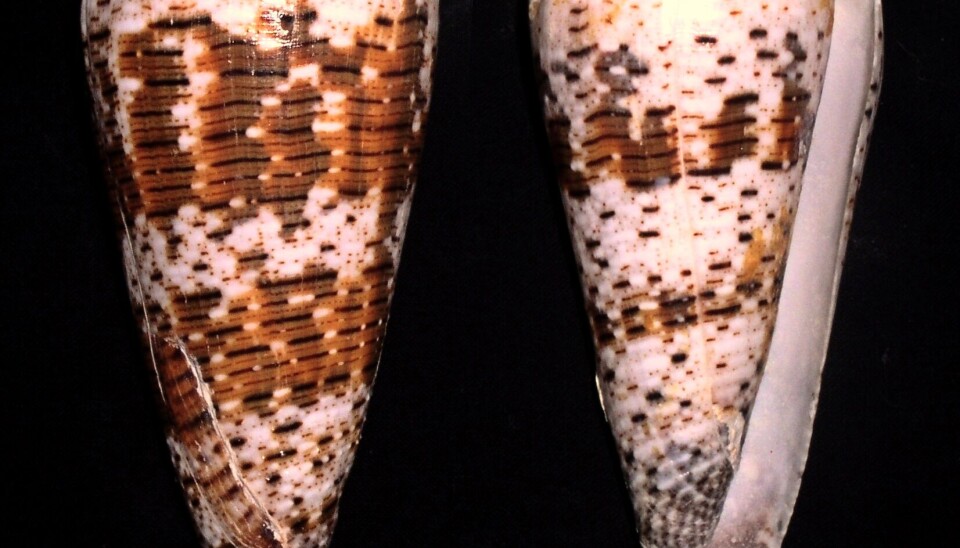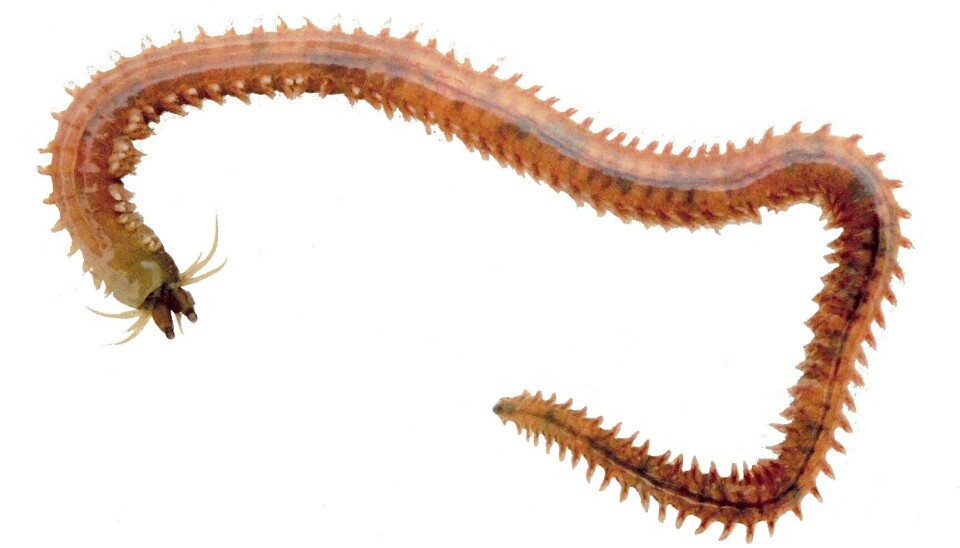Researchers' Zone:

Cone snails: the complex killers
A very curios hunting techniques that plays on the prey's sex drive makes this little tropical snail a sneaky killer
The sun is reflecting in the crystal blue ocean and your toes dig into the seabed near the shore of Madagascar, unknowing that this is the habitat for the cone snail (genus Conus).
For most people, this little snail would not cross their mind when thinking about the danger that lurks in the sea.
For those who are unlucky enough to stumble upon it when digging their toes into the seabed or collecting snail shells, the day could take a drastic turn.
If you accidentally collect the cone snail called ‘Conus geographus’, do not be fooled by its small size. This cone snail goes under the nickname ‘cigarette killer’ and has a potent venom that is said to kill you in the time it takes to smoke a cigarette.
In this article we will dive into the life of the small and complex killers, that cone snails are. This is important because the cone snails unique venom, which has an odd way of killing its prey, might turn out to be a medical benefit to humankind.
The power of cone snail venom
The cone snail lives in the tropical and subtropical seas, where it has been popular amongst people because of its beautiful snail shell.
Underneath the shell a complex venom can be found, it is produced in the venom gland connected to the harpoon like tooth it uses to sting with.
The venom contains high amounts of neurotoxins called conotoxins. Conotoxins are small peptides consisting of around 10-35 amino acids and exists in over 100,000 variants, with various targets.
Even though this seemingly innocent little snail has the power to kill you, there has only been around 27 official deaths, where the cone snail has been the prime suspect.
So why is the cone snail a topic of interest amongst scientists?
It is mainly due to the complex venom, which might serve a greater potential for humankind than being a weapon used against us.
A complex venom cocktail
Commonly, conotoxins work as antagonists on different ion channels and receptors in the nerves, which means they inhibit the normal signals induced by neurotransmitters.
This can lead to blocking of neuromuscular transmission, which manifests as muscle paralysis, respiratory failure, and other fatal consequences for the unfortunate prey.
The symptoms from the cone snail´s sting vary depending on which snail species you have been stung by, as this clever little fellow has complemented its venom and hunting methods through evolution.
Amongst the 500-700 species of cone snails, they each produce their own cocktail of 200 bioactive peptides, thus providing the snails with a complex venom cocktail directed against specific prey.
Using the worm's sex drive against itself
Besides conotoxins, cone snail venom also consists of compounds collectively known as small-molecules, about which we know very little.
However, it seems like these small molecules could play an important role in the cone snails’ way of hunting.
The species ‘imperial cone’ (Conus imperialis) is sometime referred to as ‘king’ due to its crown shaped top.
It belongs to the worm-hunters and hunts the platynereis worm (Platynereis dumerilii) with the help of small molecules in its venom.
It has two main small molecules, which play a major role. One is called conazolium A and the other is called genuanine, and they can fool the platynereis worm.
They do so by mimicking the worms native mating pheromones and uses its own sex drive against it. A one-night stand with a cone snail can therefore be fatal if you are a platynereis.

Luring the prey out of hiding
The first of the small molecules, conazolium A, mimics the native pheromone ovothiol, which is an egg-releasing pheromone released by male platynereis during mating period.
When the female gets exposed to ovothiol or conazolium A in the water, it will induce her to swim in tight small circles like a nuptial dance. But the imperial cone also plays with male worms.
The second of the small molecules, genuanine, also has a strong effect on the platynereis, as it can mimic the native mating pheromone urate, which causes sperm release in mature male worms.
The normal purpose for urate is to complete external fertilization during mating. The cone snail does not use small molecules to make the platynereis release neither eggs nor sperm, however.
The greater purpose with making the prey’s hormone system go crazy is to lure it out, as platynereis are very good at hiding.
If your home is a coral reef, it could be a long game of hide and seek, and by mimicking mating pheromones, the imperial cone snail can trick the worms out of their hideouts with false promises.
Predator in disguise
Cone snails are not the first predators to use their preys’ own pheromones against themselves, a phenomenon known as aggressive mimicry.
However, the imperial cone snail uses stable mimicking, which means the small molecules employed are more chemically stable than the platynereis native pheromones.
This means that the small molecules applied by the imperial cone are more resistant to change or decomposition in different chemical environments than the worm’s natural pheromones. Theoretically, it can therefore overwhelm the worm’s normal mating system, like human birth control pills.
But there is a catch! For the pheromone mimicking trick to work, platynereis must be sexually active, which it usually only is for a short period of time.
However, this does not mean that platynereis can feel safe in its hiding spot the rest of the time. The cone snail will just hunt with different techniques during these periods.
This is exemplified by the worm-hunters also using a technique, where they sting their prey with a harpoon-like tooth and disrupt the nervous system using the cone snail’s other venom components.
The cone snail painkillers
The discovery of small molecules with important bioactive functions in cone snail venom is not the first time the small killer has been the subject of scientific studies.
The drug Ziconotide was approved by the FDA in 2004 with the purpose of helping patients with severe and chronic pain issues. What is special about Ziconotide is that it is based on conotoxins belonging to the ‘the magical cone snail’ (Conus magus) and is less addictive than morphine and other opioids.
So why is Ziconotide not a more common painkiller? Here is where the fairy tale ends, as the drug cannot be consumed orally nor rectally.
Instead, it must be injected directly into the spine to work properly. This requires surgery, which unfortunately makes the drug complicated to apply.
Some cone snail species have already shown medical potential for humans, one of those being the magical cone with painkiller potential.
But as humans, we can hope that due to the huge diversity of bioactive compounds in cone snails venoms, these snails may yet provide even more positive medical surprises.




